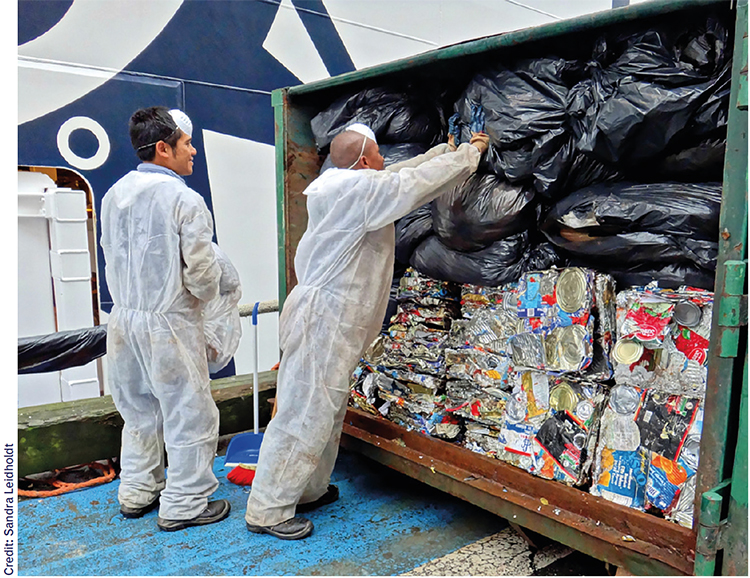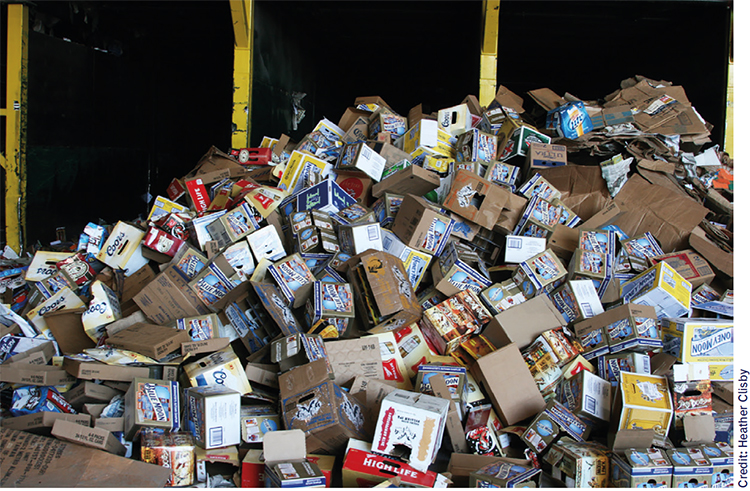Transitions are never easy, especially for those whose livelihoods are rooted in the models left behind. Drastic societal and economic changes have always caused fear of job losses, whilst often actually contributing to employment growth. The shift away from a linear extractive economy to a circular one is expected to generate millions of new jobs. Still, many uncertainties remain. Experts have different opinions on the actual extent of job creation and the quality of these jobs. Yet, all agree that strong and coherent policies are key to a beneficial transition.
The European Commission (EC) 2020 strategy for smart, sustainable and inclusive growth establishes that 75% of people aged 20 to 64 should have a job by 2020, which will require 17.6 million additional jobs. The circular economy could go a long way toward achieving this goal, since most of its core activities (such as reuse and recycling) require more labour than is needed in a product disposal model. The EC estimates that the circular economy could create 580,000 jobs by 2030; and the full implementation of waste management measures could add 170,000 jobs by 2035. However, the EC Circular Economy Action Plan does not offer concrete figures beyond the waste sector and remains superficial in its treatment of how employment growth in the circular economy will occur.
Providing concrete figures on the impact of the circular economy on employment remains a challenge. Therefore, the actual figures vary considerably according to the source that they are taken from. This is mainly due to a lack of consensus on the definitions of circular economy and green jobs, but also because the large amount of sectors and relevant legislation that could shape the circular economy making it a near impossible task. Katrin Sommerfeld, expert in inclusive labour markets at the Centre for European Economic Research (ZEW), and author of the Circular Economy and Employment study, says: “The many different components of a circular economy could counteract its implementation and job creation […]particularly, under-researched aspects of the transition such as digitisation.”
On the other hand, simply creating employment is not enough; the jobs created must be high quality ones. Trade unions criticise the lack of concrete proposals by the EC to guarantee safe and high quality working conditions. The European Public Service Union (EPSU) warns that jobs in the waste sector, for instance, are often poorly paid and the working environment is inadequate. “There were very few things about working conditions in the latest EC proposal on circular economy,” Guillaume Durivaux, Policy Officer at the EPSU, points out: “They used the nice motto of circular economy creating millions of new jobs, but without saying what kind of jobs, when, and how…”

At Least One Million Jobs
According to the Ellen MacArthur Foundation, the net employment opportunity of the circular economy is hard to estimate, since it largely depends on the design of the labour market. Even so, it maintains that “the job creation potential of remanufacturing globally and recycling in Europe already exceeds one million.” Similarly, the independent think tank Green Alliance determined that at its current rate of development the circular economy could create more than 900,000 jobs in Italy, Poland, Germany and the UK by 2030. In the first three countries, 270,000 of these jobs would bring unemployed people back into the labour force. In the UK, unemployment could be reduced by about 54,000. A more ambitious expansion of circular economy activities could even lead to around half a million jobs in the UK alone, of which about 102,000 would be net jobs. A circular model could also help offset about 18% of the loss in skilled employment expected in the country over the next decade. Libby Peak, policy adviser on resources and circular economy with Green Alliance, applauds the impact of the circular economy on job creation: “The most important thing to note is that the circular economy provides net jobs,” claims Peak, “it’s not just shifting the labour market and taking jobs from other places. It’s adding to overall employment levels.”
In a similar manner, the Waste and Resources Action Programme estimates that, following the current circular economy pattern, 1.2 million new jobs could be generated in the EU-28 by 2030, of which 250,000 will be net jobs and therefore help reduce unemployment. However, in contrast to Peak’s view, Henning Wilts, head of the circular economy research unit at the Wuppertal Institute for Climate, Environment and Energy, in Germany, is very concerned about the fact that only about a quarter of the jobs created would mean additional work positions. The rest will replace existing jobs. Most jobs in the mining and manufacturing sectors will be reallocated to waste management and services. “If you recycle more, for example, there will be fewer jobs in primary material sectors,” Wilts comments. “One million people will need new jobs and will have to shift from the primary sector to more circular models.”
The International Labour Office (ILO) estimates that: “Under the circular economy scenario, worldwide employment would grow by 0.1 per cent by 2030 in comparison with a business-as-usual scenario,” which would mean the creation of 6 million new jobs worldwide. Nevertheless, the organisation also highlights the challenge job reallocation entails: “Overall, there’ll be six million more jobs, but several million of these will simply change from one industry to another,” states Guillermo Montt, Senior Economist at the ILO’s Research Department.

Locations and Conditions of Work
Most European countries are expected to benefit from employment growth. Regarding geographical distribution, circular economy activities are expected to grow in both urban and rural areas. New businesses providing services will remain concentrated in cities, but repair and recycling jobs can increase everywhere, and even boost the development of former manufacturing areas. “In places like the UK, where jobs concentrate in London, the circular economy can rebalance the economy away from these urban centres and help areas that previously missed out on economic development,” explains Peak, from Green Alliance.
However, most jobs will be created in countries with an already strong waste sector, particularly Germany, the UK, Italy, France and Spain, which together account for over 65% of EU employment in the waste sector. Almost half of the jobs will be created in Germany and the UK alone. Therefore, workers may be displaced geographically, and not only within Europe. Workers in countries where extractive industries are major drivers of the economy, may have to move to countries where the infrastructure to develop a circular economy is already in place. Latin America and the Caribbean, together with Europe, will experience the greatest employment growth; while Asia and the Pacific, Africa, and the Middle East may suffer net job losses if economic diversification is not further promoted. “These countries don’t have the necessary infrastructure in place, so we do expect job destruction there,” says Montt from the ILO, “although that is not necessarily the case, because they may also be able to develop industries in recycling or the servicing of goods.” In any case, Montt continues, “as reallocation is likely to occur in all countries, incentives for geographical mobility will be decisive in helping workers transition from a linear to a circular model.”
With regards to working conditions, Green Alliance sees the circular economy development in the UK as an opportunity for higher quality, more stable, and longer lasting jobs. Low and mid- skilled jobs in the country, which are largely in decline, will see the greatest benefits. Increasing mechanisation and offshoring make these occupations vulnerable work positions, but the development of a circular economy will make 90% of such jobs last at least until 2025. On the contrary, the EPSU argues that working conditions and salaries for jobs in the circular economy are often far from being of good quality. In line with the EPSU’s argument, research carried out on resource recovery sectors in EU countries presented these jobs as a “new form of dirty work, located in secondary labour markets and reliant on itinerant and migrant labour, often from accession states.” It shows that workers in Material Recovery Facilities (MRF) or in textile recycling plants in the UK are often surrounded by a noisy and smelly environment, where workers share very close quarters. Moreover, working schedules are usually very long and with few breaks, as well as workers often being paid the minimum wage. “The fact that there is a risk of lower work quality should not stop us from advancing the circular economy,” explains Montt. “Instead, it should make us very conscious that it is an issue that we need to work on.”
Skills and Policies
All the experts agree that clear policies are fundamental for adequate job creation in a circular economy. Sommerfeld points out that, without the necessary policies, the transition “may be a good move for society in general, but not for the individual.” Social protection measures are, therefore, essential. Montt proposes that, for those cases where workers cannot adapt to the new labour situation, then their income losses should be compensated. “It’s unfair to have these workers pay the burden of having to transition. We should support them,” he claims. This also implies the need to guarantee healthy and safe working conditions. In the recycling sector, as an example, workers are often in contact with hazardous substances that can endanger their health. “That is why it was necessary to elaborate legislation on working conditions, but unfortunately they were not included in the Circular Economy Package,” explains Durivaux.
Policies must also pressure governments and stakeholders to fill knowledge and skill gaps so that workers can develop circular tasks. For now, it isn’t happening, Wilts from the Wuppertal institute laments: “I don’t see anyone discussing what kind of job qualifications people need to perform circular services. There’s not a single provider of educational services specialised in remanufacturing. This is a huge gap. Some factories simply started to develop educational material by themselves. The question is when will we start to develop these skills and provide education for this development.” The EC, in turn, says practical support for businesses and citizens is already available through programmes such as the Horizon 2020 Framework Programme for Research and Innovation or Erasmus+. In addition, the European Social Fund is investing money in improving workers’ skills in countries like Spain, where it has committed more than €22 million to a green jobs programme.
“Getting the right policies in place is the biggest challenge,” acknowledges Peak. To get there, the benefits of a circular model on economic development must be further recognised, just as environmental benefits are. Employment must be considered a key element when developing circular economy strategies. Only then can a greater number of jobs and decent working conditions become a reality.
Sources
Green Alliance (2015), Unemployment and the circular economy in Europe: a study of opportunities in Italy, Poland and Germany;
www.green-alliance.org.uk/unemployment_and_the_circular_economy_in_Europe.php
Green Alliance (2015), Employment and the circular economy: job creation in a more resource efficient Britain; www.green-alliance.org.uk/employment-and-the-circular-economy.php
Green Alliance (2016), Job quality in a circular economy; www.green-alliance.org.uk/resources/Job%20quality%20in%20a%20circular%20economy.pdf
Top image: Credit: Heather Clisby

